Dry Stone Walls: An Alternative History of the British Isles
Throughout the nation, from Yorkshire to Orkney, miles of moss-covered dry stone walls snake their way through the open land. You would be forgiven for not looking twice. However, dry stone walls offer an alternative route into the history of humanity in the British Isles.
28 Nov 19 · 12 mins read

The British countryside has captured the imagination of walkers and adventurers for centuries.
From the glens of the Scottish Highlands to the quaint villages of the Yorkshire Dales, Britain’s rural landscapes harbor a truly timeless beauty. This beauty has been well documented over the centuries, captured in the writings of poets and authors, from Christopher Marlowe in Cantebury, to William Wordsworth in Monmouthshire and Dylan Thomas in Swansea. Though the iconic elements of the British countryside have all been captured in verse or rhyme, there is one feature that is nearly always all but ignored. Criss-crossing Britain lies the fragments to this untold story, its secret hidden in plain sight. Throughout the nation, from Yorkshire to Orkney, miles of moss-covered dry stone walls snake their way through the open land. You would be forgiven for not looking twice. Typically a jigsaw of weathered stones and local flints, dry-stone walls are walls constructed without the use of any mortar. They hug the contours of the land, quietly extending out as far as the eye can see, standing steady as though rooted to the bedrock below.
In highland landscapes, dry stone walls are as inconspicuous as they are ubiquitous. Seasoned walkers may traverse the nation for decades, acknowledging the simple beauty of these walls without ever pausing to consider them further. Many will walk right beside such walls for hours, without ever wondering how the collection of rocks still stand without support, or even how long those walls might have guarded that border. Beyond there simple aesthetic beauty, dry stone walls offer an alternative route into the history of humanity in the Britain. Many of these walls were built during the Bronze Age more than 3,500 years ago. They survive as the last evidence of our forefathers’ gradual transition from hunter gatherers to settled farmers. The evolution of stone walls since, most notably around medieval villages in northern England, continues this arc of human development. They document the island’s shift from feudalism to capitalism, and the pains and rewards that followed. That these walls still stand with no mortar, bound only by gravity across steep hills and valleys, is a testament to those who made them, and an open invitation to find out more.
As much as they reflect Britain’s past, dry stone walls are more than just aged artifacts from a bygone era. They have become a defining feature of local ecosystems across the country, providing a refuge for native wildlife amidst the vast swathes of homogenized, single-crop farmland . Their structure enables the growth of unique micro-nurseries, and provides a home for range of animals. Even a rudimentary understanding of dry stone walls’ history, structure and appearance can transform your experience of walking through Britain. They offer a great route into nature spotting, and can help animate the surrounding landscapes with the stories of our ancestors.
Dry Stone Walls in the Bronze Age
Stone walls have been built by farmers for more than three millennia across England Scotland and Wales. The earliest examples date to around 1600 BC during the Bronze Age, and can be found scattered through the Orkney Isles, Dartmoor, Bodmin Moor and Cornwall. These walls, technically called reaves, are the easiest to overlook during a country stroll. Such walls were either constructed as a place to dump stones that had been cleared during the creation of Britain’s first farms, or built as an effort to mark the territories of those farms, as Britain’s farmers adapted to the challenges of agricultural societies. Due to their age, most reaves will have become so blended into the surrounding landscape that they are often mistaken for natural banks or rock deposits. Unfortunately, Bronze Age dry stone walls are easiest to identify in aerial photos. You’re best chance to find reaves will be to search online before your walk, and the list of prehistoric sites on the English Heritage website is certainly the best place to start. There are also a few tricks to help spot and follow these ancient structures on the ground. The first is to consult your local guide book, which will often make note of such features if they can be found in your area. If you know there are reaves in the surrounding countryside, you are best off finding a local vantage point, as a reave’s outline can be traced even from a minor height. Finally, if a wall-like structure is visible beneath a thick covering of peat in northern climes, then there is a chance that you are are looking at a prehistoric wall, given the amount of time such coverage takes to develop.
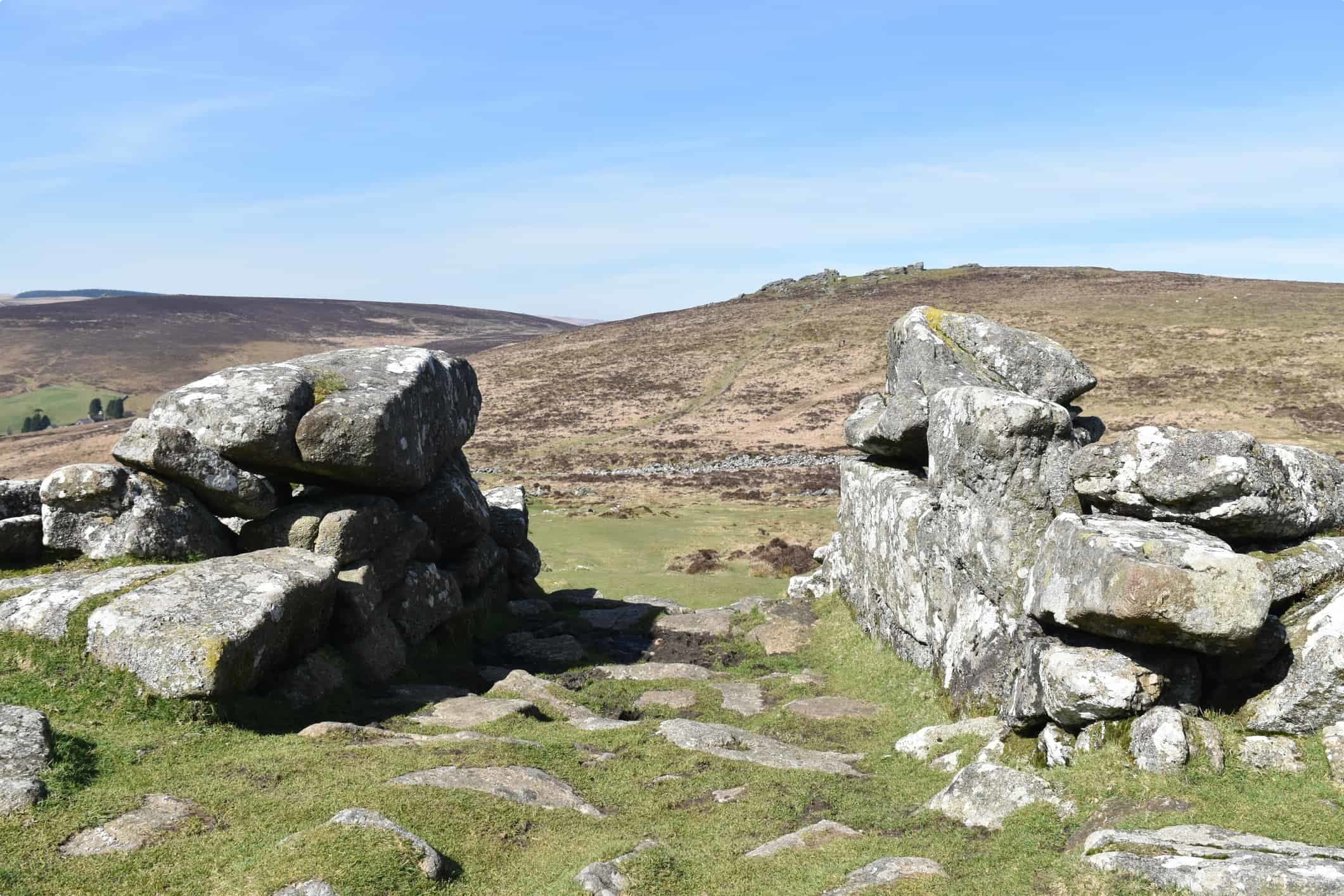
The Transition to Medieval Society
As Britain left behind its ancient past and transitioned to a medieval society, agricultural developments demanded a new kind of crop division. Perhaps the most radical of these changes were orchestrated by the Tudor dynasty in the 15th century AD. Under the Tudor land reforms, land ownership in rural areas was comprehensively restructured to improve the farming system. Farmers around villages in England could add 8 acres of moorland to their property every time that a son took over his father’s inheritance. This inter-generational growth led to a proliferation of agricultural land across Britain, as thousands of individual farmers expanded and consolidated their farms within a new national jigsaw of land ownership. The expansion of farm lands was naturally accompanied by a considerable spike in the construction of dry stone walls, as farmers marked the expanding boundaries of their properties. The absence of a centralized farming system ensured that most of these new plots were irregular in shape, which meant that the walls built around them were similarly irregular. This makes medieval dry stone walls fairly easy to spot, as they tend to curve across the landscape, hemming in seemingly random sections of land, all in great contrast to the later, straighter lines of modern British farming. Some of the best examples of these medieval dry stone walls can be found in the southwest of England, where the walls were constructed with the same distinctive, fossil rich limestone that makes up the iconic Cotswold villages. Dry stone walls were largely restricted to hilly, typically poorer areas like this. Hedgerows or mortar walls could, even during the medieval period, be afforded in the more affluent low-land farming areas, like East Sussex. Evidently, the location, appearance and style of medieval dry stone walls are all intimately tied to regional and historical subtleties of the past; this is what makes them so fascinating.
The Agricultural Revolution
The Agricultural Revolution, roughly spanning the 18th and early 19th centuries, oversaw the most dramatic overhaul of farming practices in British history. The Agricultural Revolution was essentially kick-started by a wave of policies passed between 1773 and 1882 by the British Parliament, together known as the Parliamentary Inclosure Acts, which dictated to small scale tenant farmers and the nobility how farmland must be organised. These acts allowed the sale of common land, which almost everyone previously had a traditional right to use, to private owners. Consequently, vast swathes of common land and small medieval farms were incorporated – or ‘enclosed’ – within individual estates, all of which required new walls. Therefore, a new wave of wall construction outside villages in England swept through the country, as farming estates seized rushed to mark the boundaries of their new lands. This dramatic shift was the motor of the Agricultural Revolution, one which changed British farming forever.

The Inclosure Acts encouraged the centralization and systematization of farming practices. Irregular farming practices and the shared prosperity of the land gave way to a more commercial farming structure. The dramatic changes in farming practices in Britain kick-started the march towards the Industrial Revolution, as those farmers who were bought out of their cottages flocked to the cities for work. The burgeoning urban populations could now be fed, thanks to the far greater efficiency of the rural farms. In a sense, the Agricultural Revolution literally fed the workers of the factories that changed the face of Britain. However, those farmers who had been bought out of their land often struggled in the new cities, suffering in conditions that have been imprinted onto the national psyche through the works of Charles Dickens. The dry stone walls of this period therefore stand as a testament to this human story of pain and prosperity, offering a level of depth to Britain’s bucolic vistas. These walls are easily identifiable due to the nature of their construction. Rather than being built by the individual farmers who worked the land, as in the ancient and medieval periods, these walls were commissioned by the wealthy landowners of the newly extended estates. They are therefore far more professional in their construction, and follow straight lines due to the new systematization of land ownership, and have well defined corners.
Dry Stone Walls in Nature
Dry stone walls are not simply artifacts of the past or structures of farming. They are an integral part of local ecosystems, as important to local wildlife as hedges or trees. The smallest gaps in a wall’s rocks provides the perfect shelter for an entire food chain of small insects and bugs, from spiders and springtails to millipedes and bees. Larger gaps can accommodate animals from toads and hedgehogs towards the bottom, whilst beautiful robins, redstarts and little owls have a residence at the top. Just as the walls provide shelter for prey, they similarly provide opportunities for predators. The stoat, a remarkably fierce predator, will hug the wall as it bounds from one hunting ground to another, hiding itself from prey often several times its own size. In areas of flat land, raised sections of walls offer birds of prey a raised platform from which to scour the land, and so a well-chosen spot can become the perfect bird-watching location. Often, one or two holes were deliberately left clear at the base of a wall for sheep or small animals to pass through – depending on the size of the hole –, in effect funnelling the nearby wildlife through a narrow highway. Though these holes were once used for hunting and poaching, they now create a great opportunity for wildlife watching.
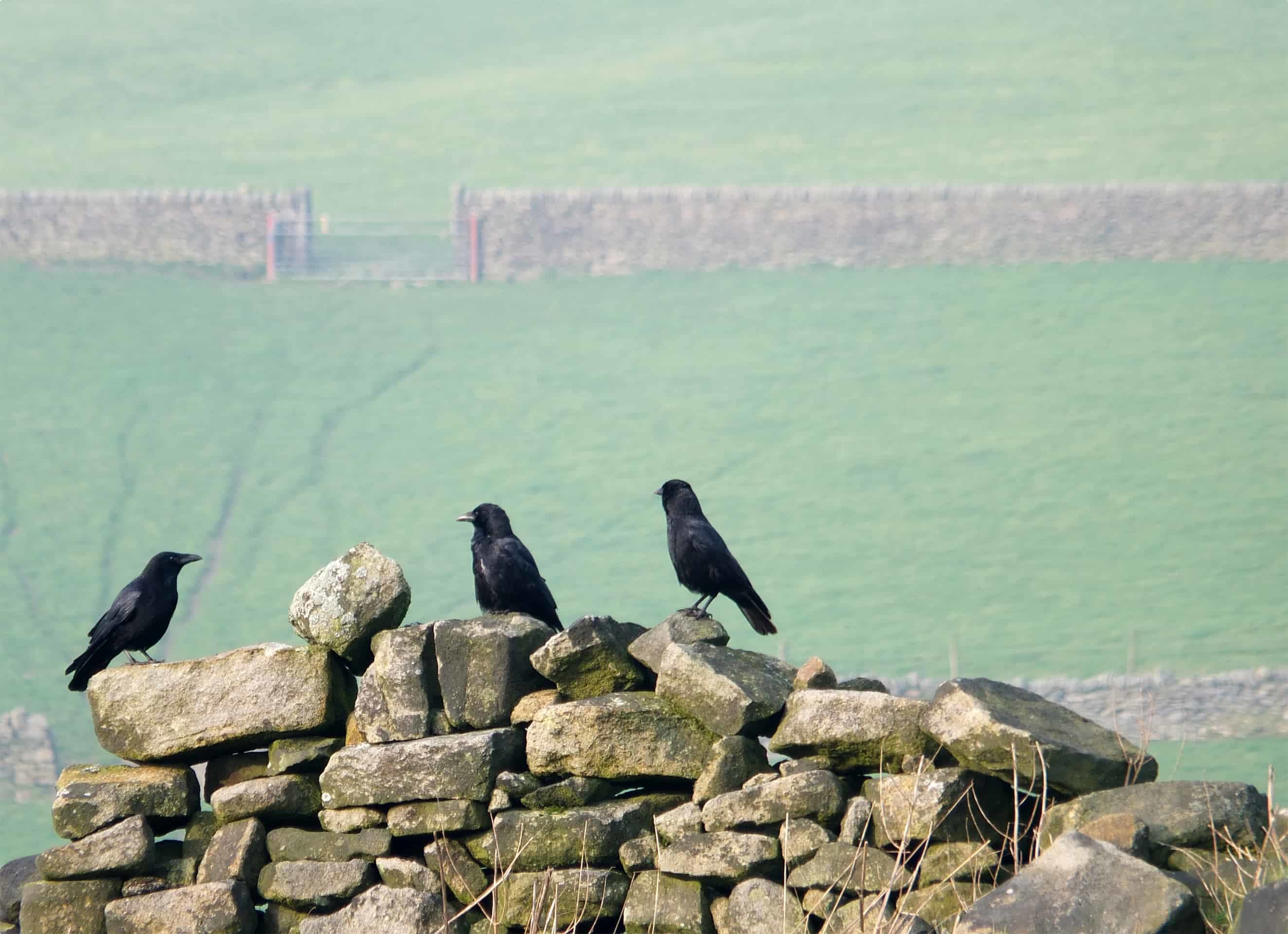
Dry stone walls can be memorable for the botanist as much as the animal lover. Many early walls were originally filled in with sections of earth, or even thatched, creating the perfect shelter for beautiful nurseries of wild flowers. A fine example is the fairy foxglove, a delicate alpine plant that flowers into a constellation of pink flower heads, which thrives in the shelter of stone walls. The wild Wall pennywort, similarly common in southern stone walls, is another interesting plant. Its’ green, bell shaped flowers are hard to mistake, and is seen by some as a tasty substitute for lettuce. It has a more ancient history as a homeopathic medicine for a whole range of ills, although it is not recommended as a modern medicine! In the south-west, Oxford ragwort, ivy-leaved toad flax and members of the saxifrage family can be found dotted across walls. When walking next to a dry stone wall, one could very easily spend most of the day tour with their eyes firmly on the ground, scanning for such plants in their abundance.

A dry stone wall’s appearance is also a reflection of the geology of the local area. Most walls were driven by necessity and practicality, at as little possible expense, and so only local stones would be used. An area like the Peak District is dominated by limestone, which can be broken down smoothly along the rock’s internal cracks, and so the walls there will be made by tightly packing narrow slabs of rock together. In Orkney the predominant rock type is granite, which is considerably harder to break down, and so their walls look more like a collection of boulders. Similarly, walls in Derbyshire take on warm-brown hue of the surrounding sandstone, whereas walls in Wales have the amazing nickname of “dog’s heads” due to their the use of oval shaped stones. This regional variety is part of the intrigue of dry stone walls, as walls built for exactly the same reason change dramatically from landscape to landscape, offering a point of contrast for seasoned walkers.
An Example of Dry Stone Walls: the Yorkshire Dales
The Yorkshire Dales, a national park in the north of England, has become one of the most popular destinations for village tours of England. The Yorkshire Dales sits on the incline from the flat pastoral land of the Vale of York up to the steep peaks of Pennines mountain range behind it. Within the cottages and hidden villages of the Yorkshire Dales, there resides a deep tradition of farming, which extends over a millennium. Throughout the natural beauty, running from rolling hills to hidden lakes and cliff-faces, stone walls stand solidly as the largest man made feature in the region. All together stretching over 8000km through the Yorkshire Dales, the walls are both inconspicuous and dominant; simultaneously standing in harmony with the surrounding landscape, whilst hinting to the scarring effects of our effort to reap and prosper from the land.
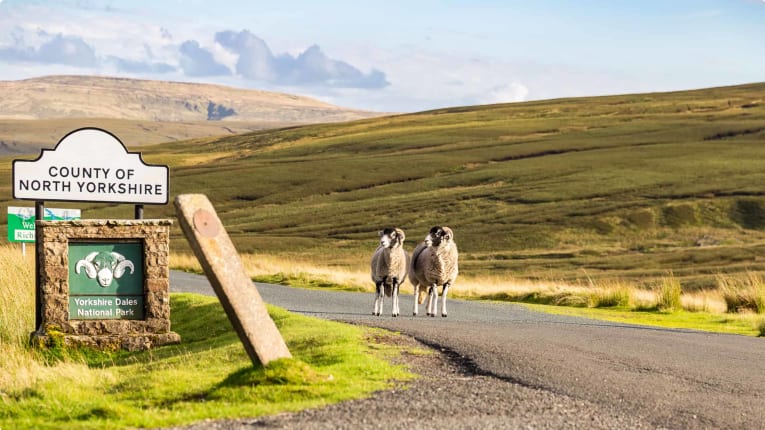
The dry-stone walls are a testament to the proud people of Yorkshire. Their sturdy lines are landmarks to the endeavor and hard work of local families. For the several centuries, these people have made the most of this rich and fertile, but often harsh and wintry, climate. In a sense, these walls have been witness to a society that has changed little. The oldest horse race in England is still held ever year in the Yorkshire Dales at Kiplingcotes, which dates back to the early 16th century, around the date of many of the surrounding dry stone walls. The old country pastimes like shooting and hunting continue as if uninterrupted from the 1800s. Walk into a local pub in the evening, and it can feel as though few changes have ever interrupted the homely atmosphere.
However, between these long standing traditions, life in the Yorkshire Dales has been forced to march with the beat of modernity. Mechanization has pushed many farmers out of the region, whilst a shifting economic climate has forced a greater reliance on tourism as opposed to the traditional reliance on agriculture. This has only been to the benefit of outsiders, as an area once closed to all but the most intrepid of walkers has been opened up as a time capsule for all enthusiasts of nature and rural Britain.
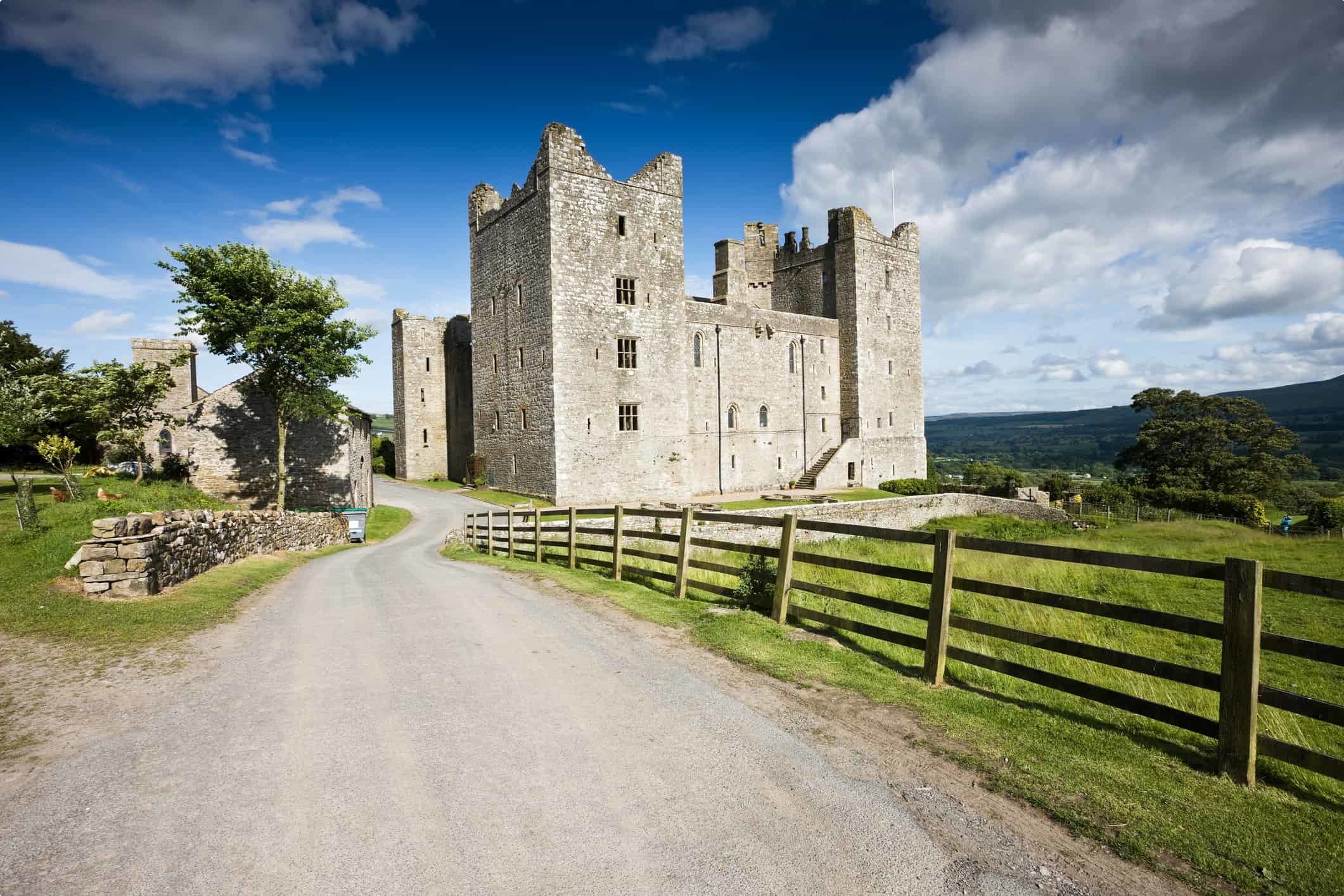
Several walls were built in the medieval period, such as the great limestone blocks surrounding the castles in Wensleydale. Here, the walls delineate the estates of the old nobility, who ran feudal Britain from their parapets. Elsewhere, the majority of walls are built from smaller stones. These walls taper from a wide base to a narrow top and extend to the horizon in lines as straight as arrows. Such architecture dates to the agricultural revolution, and the inclosure acts. They form part of a systematic wall-building effort throughout the Dales in the 18th and 19th centuries. Nearly all such walls stand at around 1.5m tall, although a few examples, like at Woodhall Warren, are a must see. Here, the dry stone walls tower a few feet above the height of an average person.
A Trip to the Cotswolds?
Village tours of England should always make the time to visit the Cotswold region. A standard Cotswolds tour offers a diverse and busy itinerary of thatched medieval cottages, rolling hills, heritage sites and hidden villages. There is nothing more quintessentially English than catching sight of a bell-jingling, handkerchief waving, toe-stepping Morris dancer. Even away from the more iconic landmarks, a casual wander or stroll on a summers night through any of the Cotswold villages is a memorable experience in itself.
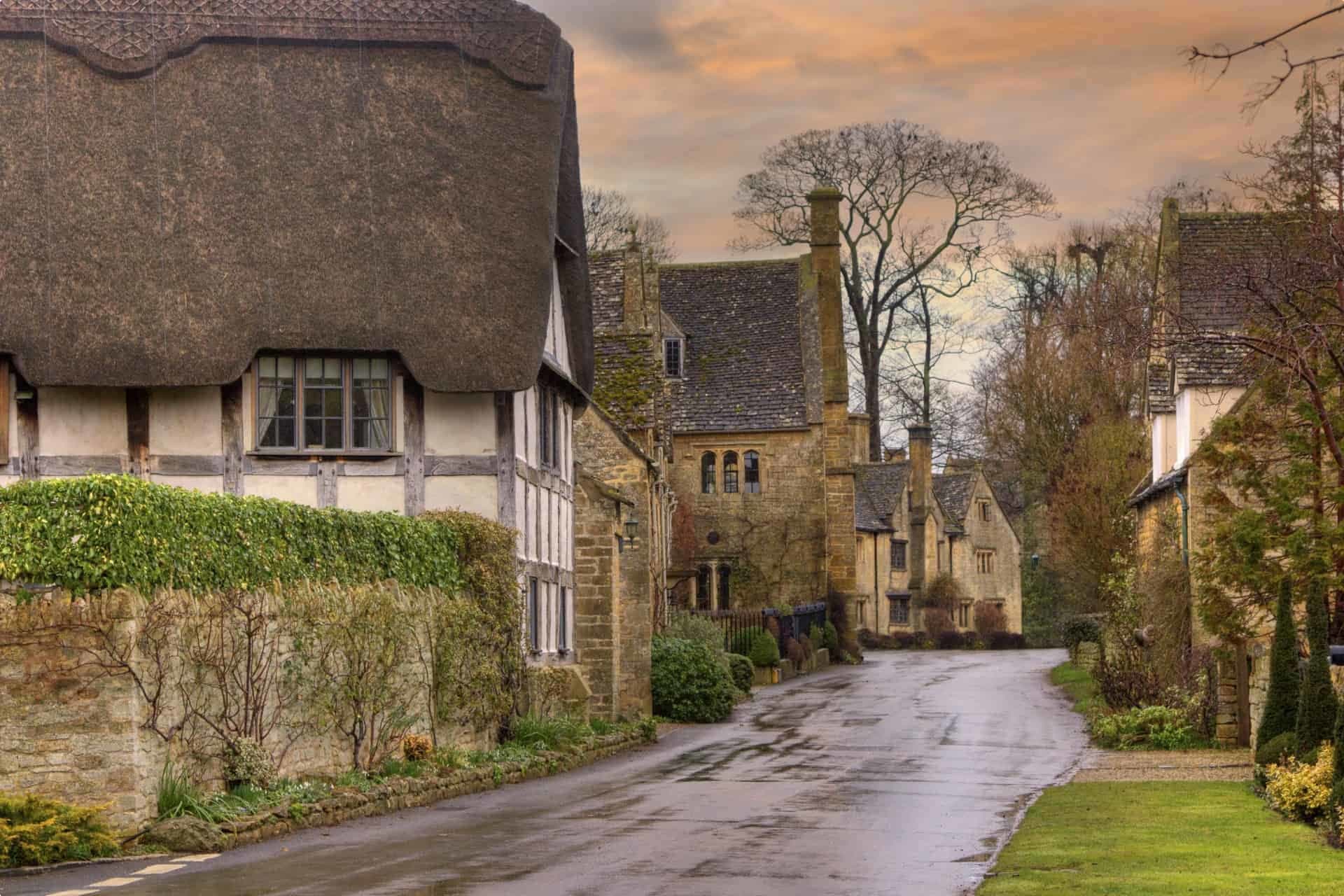
However, next time you are in the Cotswold, it is worth making the effort to look beyond the main attractions. The region’s twisting dry stone walls are iconic and extensive, but equally forgotten. They have been compared with the familiar lines that trace across a much-loved face, and are just as charming in reality. Constructed from the local Cotswold stone, a pleasant yellow limestone, they seamlessly connect the surrounding quaint villages to the rolling green hills. Extending for more than 6,000 km, the walls are hard to miss, and really are worth your time.
How to Find Out More

Dry stone walls are the hidden gems, the unassuming monument, of the British countryside. Though their presence is unassuming, dry stone walls stand at the intersect of the major themes of life in rural Britain. They represent the traditions that tie hidden villages to their more hidden pasts. The boundaries they mark reflect the great economic shifts that have come and gone, each shaping the landscape more than the last. Within their structures they protect fragile ecosystems and sustain wildlife in increasingly adverse conditions. If nothing else, dry stone walls demonstrate the value that can be gained by taking the time to stop, pause, and appreciate the finer details set within Britain’s great rural vistas. From village tours of England to historical tours, the walls offer an alternative route into the rich heritage of this country. Even over the course of an afternoon, the imagination is set free to explore the hidden stories of our ancestors, who similarly found a sense of home in this little corner of the world.
FAQs
Where can i find the best dry stone walls in Britain?
Westmorland Dales, Lake District
Our number one pick is the dry stone walls in the Lake District. Nestled in the bucolic scenery of the Lake District, a patchwork of dry stone fences cut through the local land. Many of the cottages and villages trace their history to medieval Britain, and so most of the old medieval farms have been mapped out. This enables a unique comparison between the pre and post-enclosure farming practices, both of which fundamentally shaped the nature of the society around it.
How can i see more?
Odyssey Traveller offers two tours that provide the perfect opportunity to see more of the British countryside:
Odyssey’s Walking Trip of Rural Britain
The tour spends three days in Dartmoor, which boasts a beautiful collection of dry stone walls from the Bronze Age, Medieval and Early Modern periods. Bronze Age reaves can be found in Islington, Devon and Mountsland Common, where they align with hut circles. Medieval walls in Dartmoor were built more for clearance, although they are complimented by an extensive collection of later walls, designed more for as property boundaries. This is the perfect area for small group tours or guided touring parties, given the ease of access and variety of the Stone Walls on offer.
Odyssey’s Village Tours of England
This tour for mature aged and senior travellers includes days spent a number of quintessentially English prettiest and oldest places to live. This collection of English villages visited reflects a range of economic activities, architectural styles and historic influences. From chocolate box thatched cottages, the local parish church, the inn, to the country house built of Cotswold stone, or fishing boats tied up in what are today popular tourist towns in England.
Further Reading and Local Knowledge
The Cotswolds
Where to find dry stone walls in the Cotswolds, from the official website.
https://www.cotswoldsaonb.org.uk/our-landscape/dry-stone-walls/
Deserted villages in the Cotswolds, from a local blog.
https://www.cotswolds.info/blogs/deserted-villages.shtml
The Lake District
All about dry stone walls and where to find them, from the region’s website.
https://www.friendsofthelakedistrict.org.uk/25-dry-stone-walls




